2. How to Speak like an Immunologist
1/35
Earn XP
Description and Tags
Lecture 3
Name | Mastery | Learn | Test | Matching | Spaced |
|---|
No study sessions yet.
36 Terms
Why does immunology feel overwhelming at first?
Detail-heavy science
Many abbreviations
Molecule names sound similar
Tests picky on small details
Feels like “too much to memorize”
At the simplest level, what makes up immunity?
System of cells and molecules
Example cell: Macrophage (Kirby)
Example molecule: Immunoglobulin (Antibody)
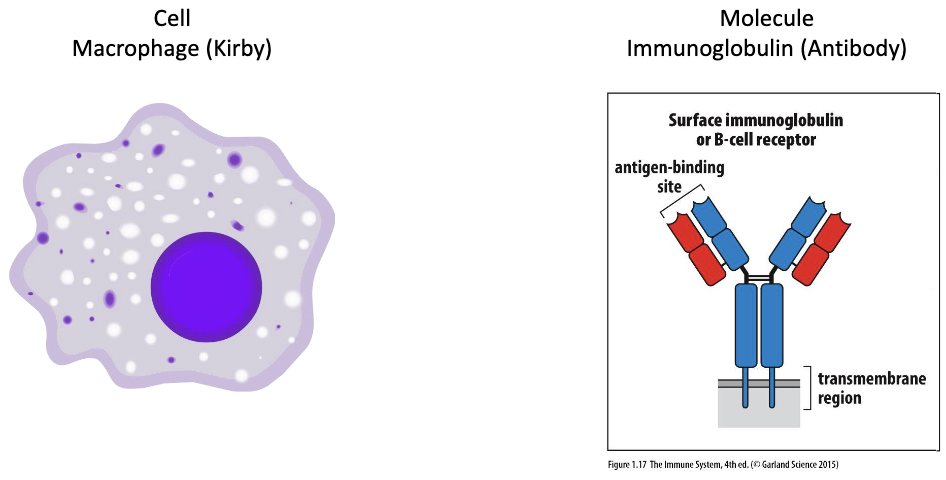
What are the two major arms of immunity?
Innate immunity
Hard-wired, evolutionary conserved
Has humoral (molecules in fluid) and cellular (cells) components
Adaptive immunity
Built for variability, more flexible
Also has humoral and cellular components
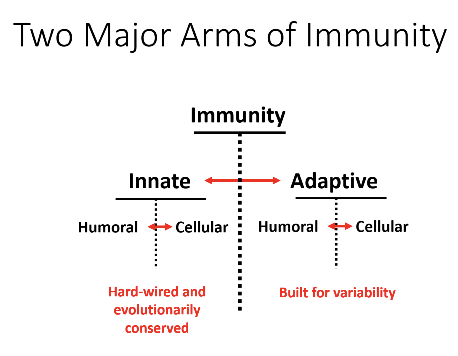
Who are the immune cells?
White blood cells (leukocytes)
Why are they called “white” blood cells?
Centrifuged blood separates into layers:
55% plasma (top)
<1% buffy coat (WBCs + platelets)
45% erythrocytes (RBCs)
WBCs sit in the pale “buffy coat”
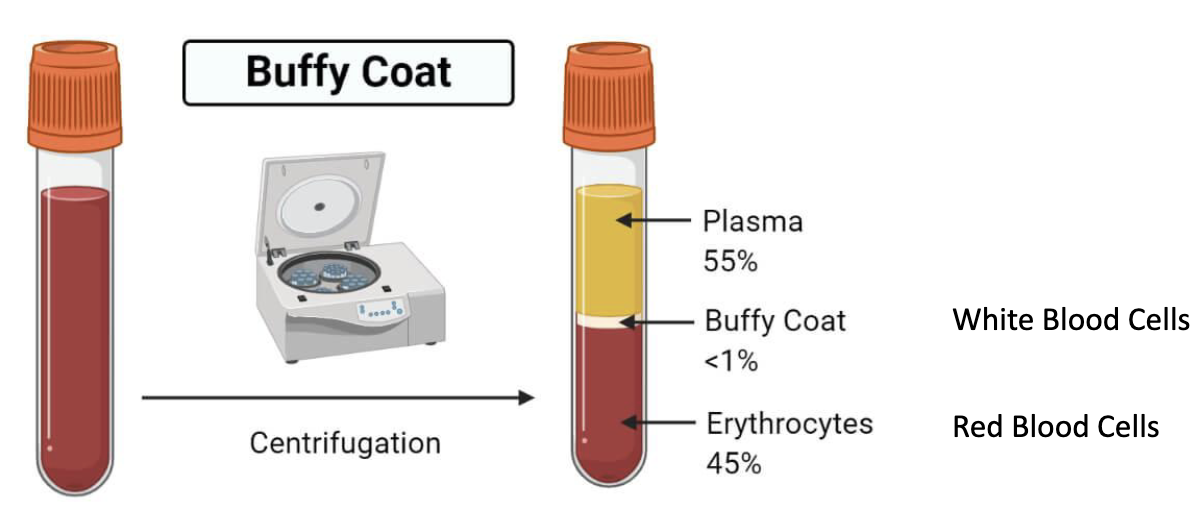
Examples of immune cells (non-lymphocytes)?
Macrophage
Monocyte
Neutrophil
Eosinophil
NK cel
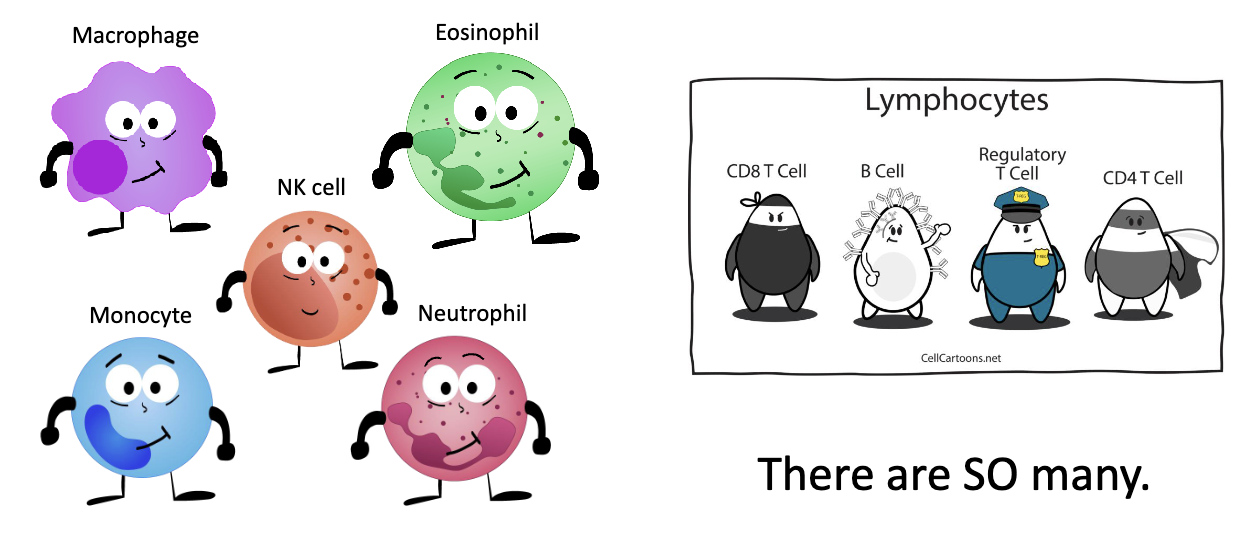
Examples of lymphocytes (special group of WBCs)?
CD8 T cell
CD4 T cell
Regulatory T cell
B cell
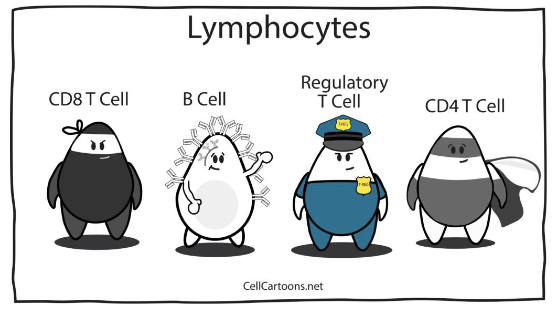
Where do immune cell names often come from?
Latin or Greek roots
Example:
Leuko (Greek: white) + cyte (Greek: container/body) = “leukocyte”
Lympho (from lymphatic tissues or lymph nodes) + cyte = “lymphocyte”
Where do immune cells come from?
Derived from stem cells in bone marrow
Process: differentiation (stem cell → specialized cell type)
Cell fate = the “end” type chosen (e.g., RBC fate vs. WBC fate)
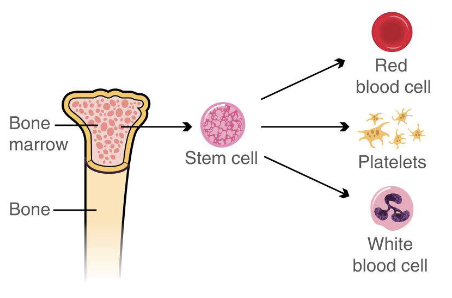
What happens once immune cells are differentiated?
Circulate in the blood
Migrate (“home”) to different tissues and organs
Adapt to local environments
Scan for infection and perform homeostatic functions
Homeostatic: opposite of defense
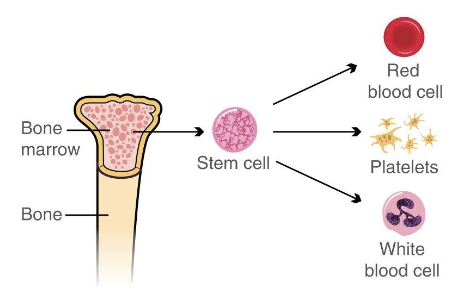
How are immune cells different from organ-specific cells like liver or kidney cells?
Liver/kidney cells: stay in their organ and serve one function
Immune cells: travel through body, adapt to tissues, scan for invaders
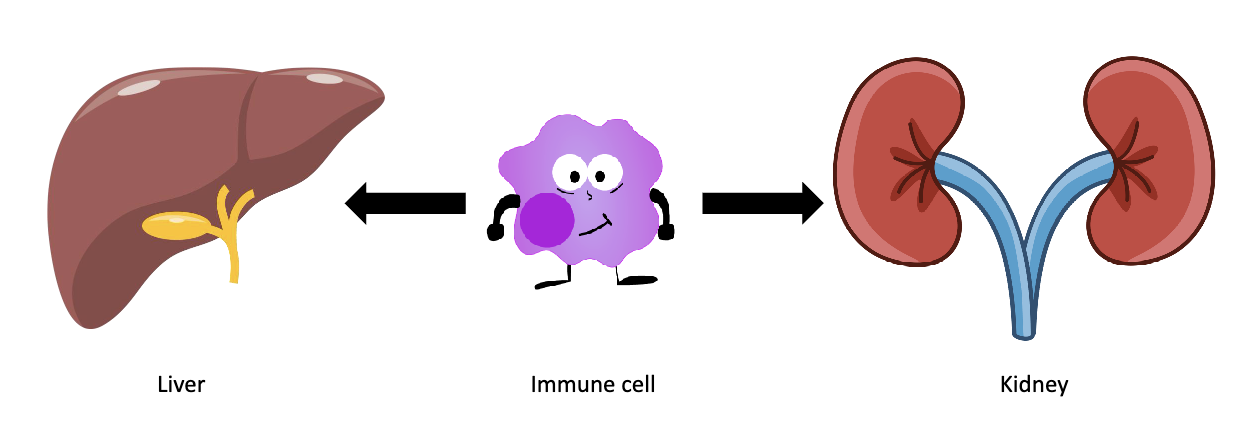
What is a cell?
Individual unit of an organism
All cells (except RBCs) have a nucleus with DNA
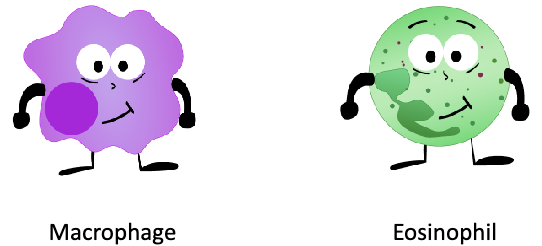
If all cells have the same DNA, why are they different?
Not all genes are expressed in every cell
DNA → mRNA → Protein = gene expression
Transcription + translation = gene expression
Different cells express different proteins
Macrophage: doesn’t make eosinophil proteins
Eosinophil: expresses eosinophil peroxidase
This selective expression makes cells unique
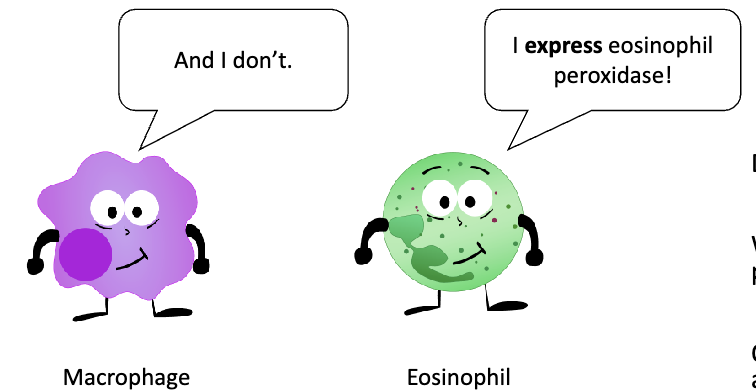
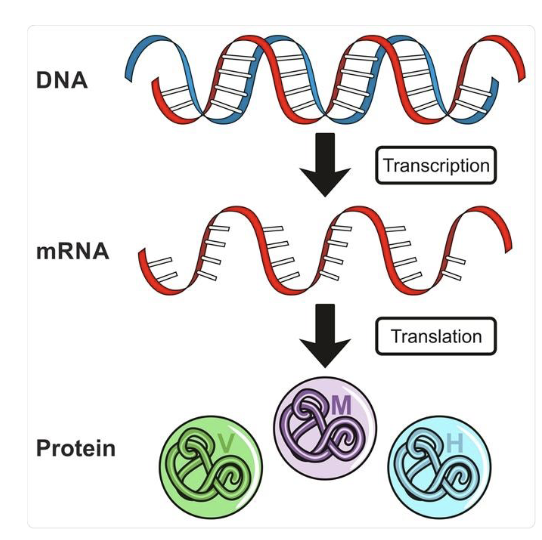
How do immunologists define cells?
Based on what proteins they make/express
Especially focus on cell surface proteins (easy to study)
Example markers: Antibody, CD3

What does it mean if a cell is “positive” or “negative” for a protein?
Positive (+): cell expresses that protein
Negative (–): cell does not express that protein
Example:
CD3+ cell = expresses CD3
Antibody+ cell = expresses antibody
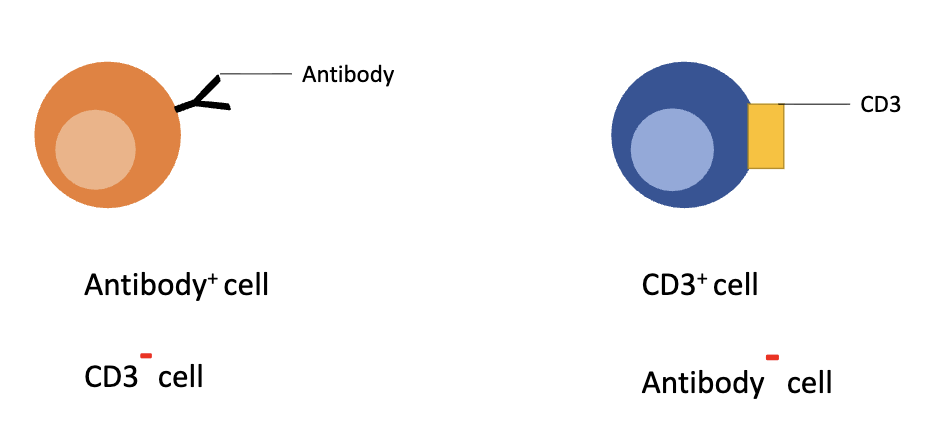
How can protein expression help identify cell types?
Example:
Antibody+ CD3– → B cell
CD3+ Antibody– → T cell
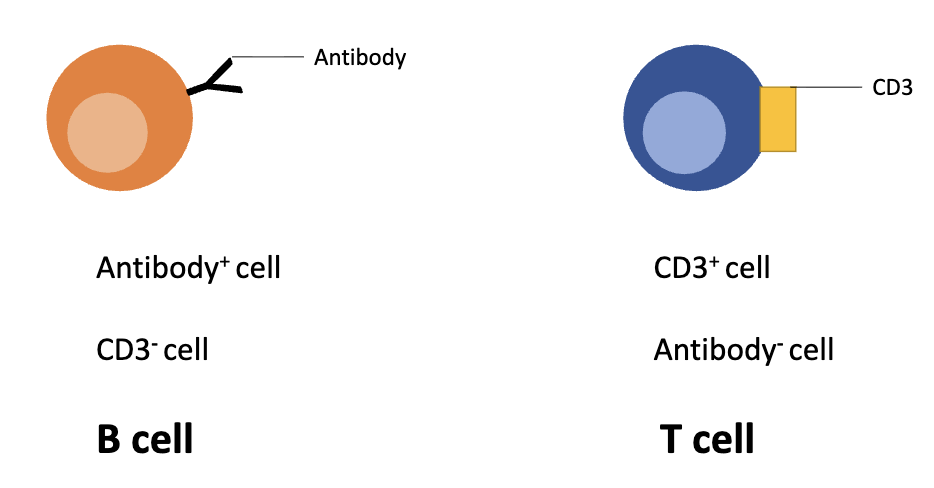
Why does identifying immune cells feel confusing at first?
Many types, lots of surface markers
Not “obvious” at first glance
That’s okay—it’s still early in learning (only lecture 3!)
What does “phenotype defines function” mean in immunology?
What a cell makes determines what it does
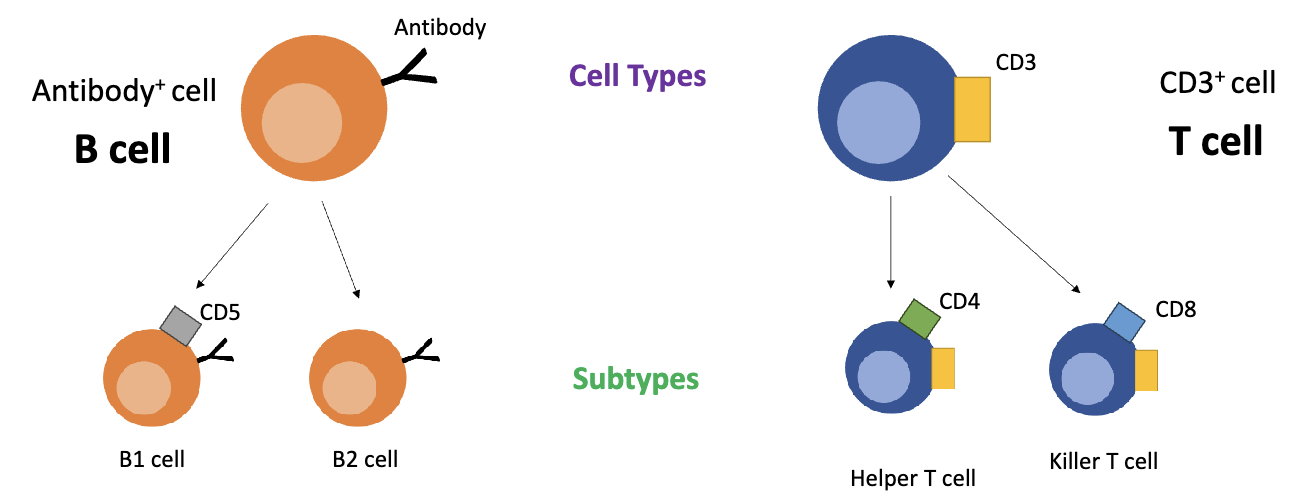
What are “cell types” in immunology?
Defined by proteins they make
Example:
Antibody+ cell = B cell
CD3+ cell = T cell
Cell type = overall lineage of a cell
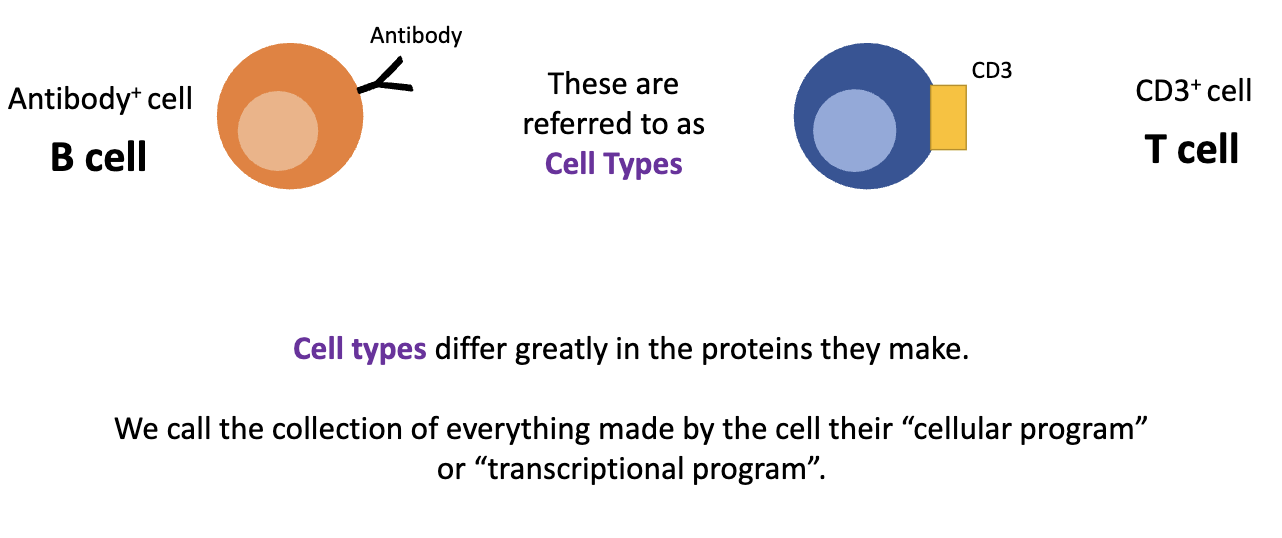
What is a “cellular program” (or transcriptional program)?
The complete set of proteins a cell makes
Defines the function of that cell
What are “cell subtypes”?
Subdivisions within a cell type, based on extra markers/proteins
Example:
T cells → Helper T cell (CD4+) vs. Killer T cell (CD8+)
B cells → B1 vs. B2 subtypes
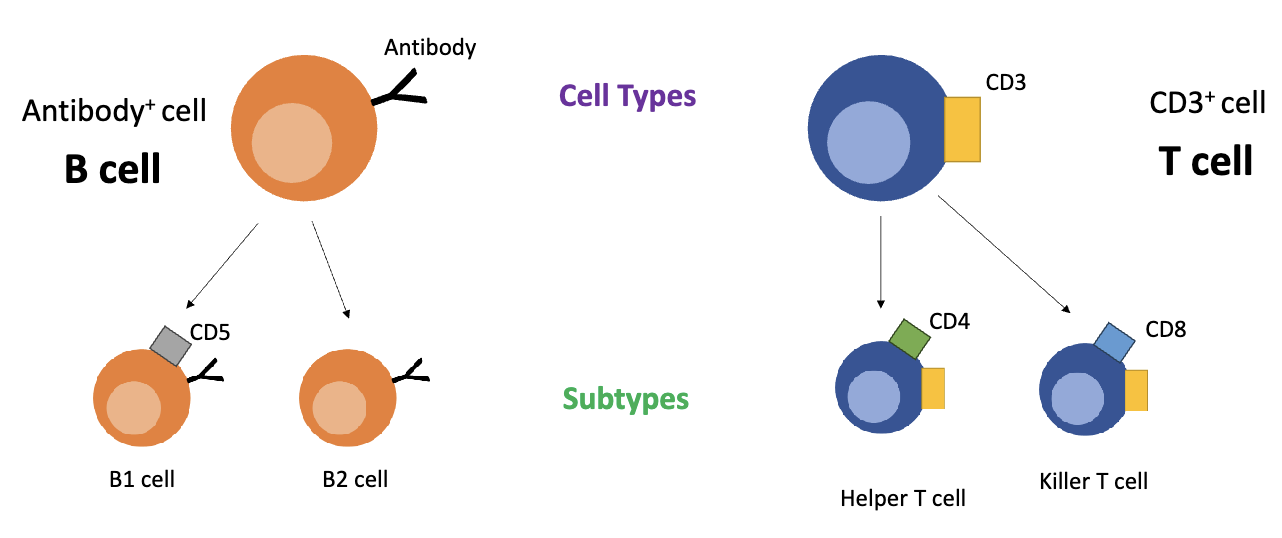
At the simplest level, what makes up the immune system?
Cells (e.g., macrophage)
Molecules (e.g., immunoglobulin/antibody)
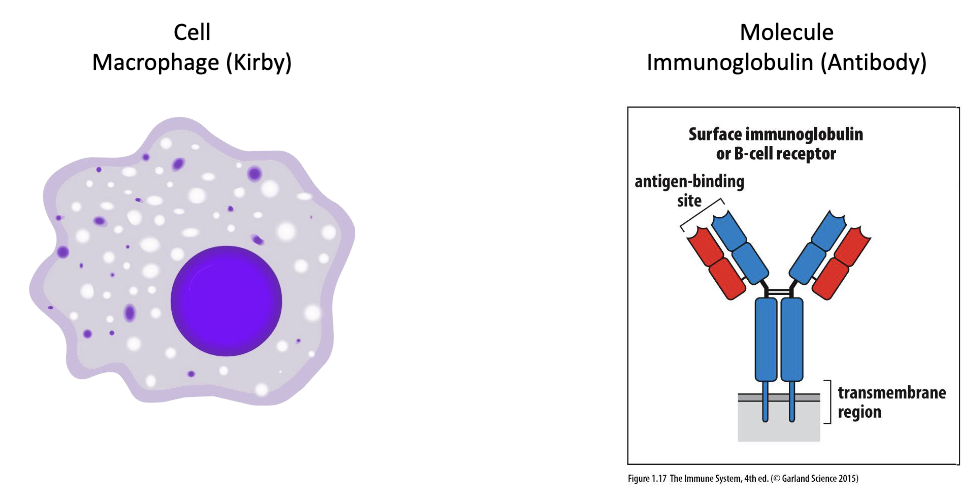
How do immune cells achieve immunity?
By interacting with:
Each other
Non-immune cells in tissues/their environment
Through communication and exchange of signals
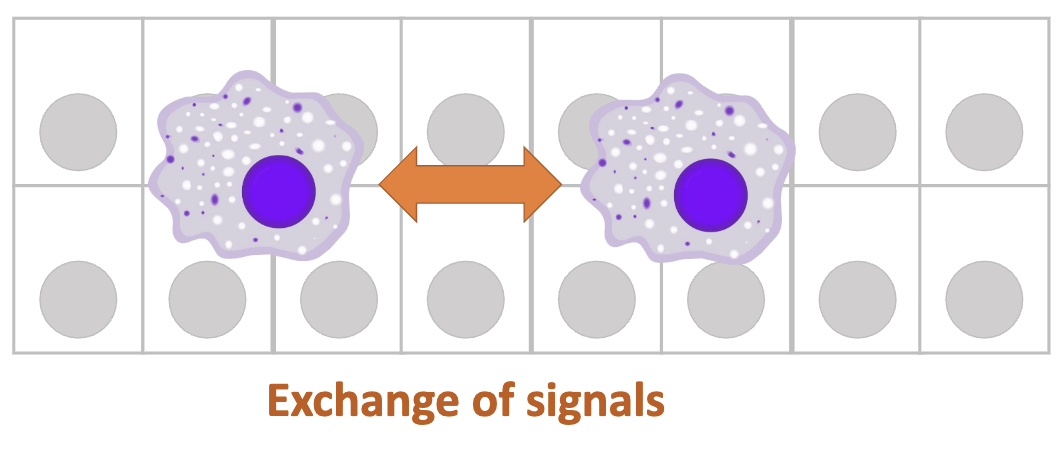
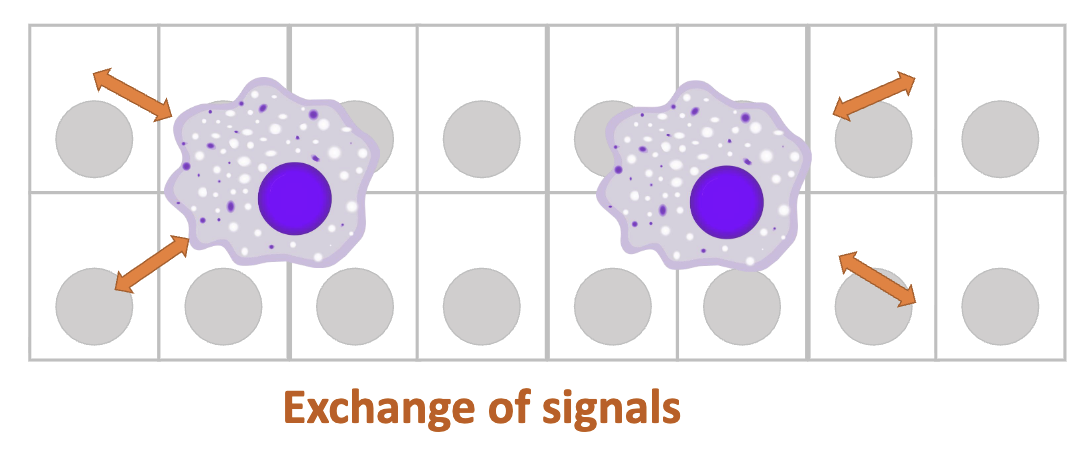
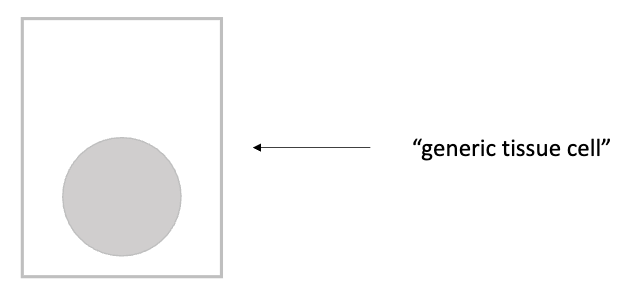
Do immune cells literally “talk” to each other?
No — they communicate through molecular interactions
Signals sent and received via proteins
How do cells communicate at the molecular level?
Through receptors and ligands
Work like locks and keys
Example: Protein A (ligand) + Protein B (receptor) → click → change in cell behavior
Leads to changes in gene expression
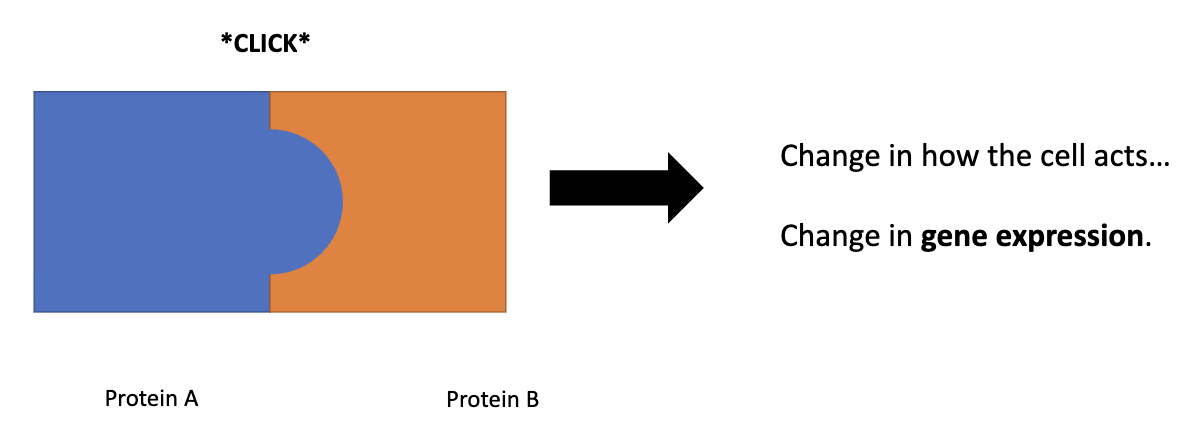
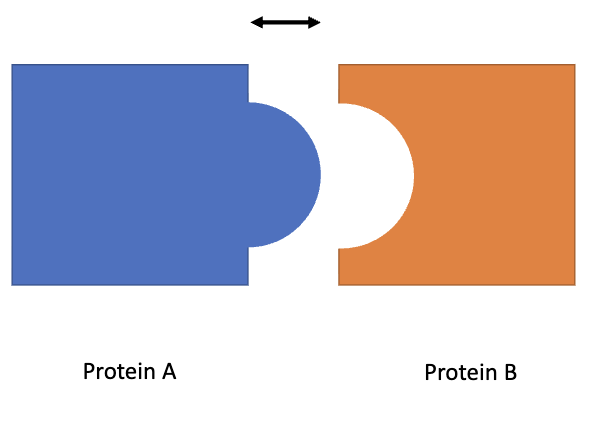
What are the two main ways cells communicate?
Direct communication – receptor on one cell binds directly to receptor/ligand on another cell
Indirect communication – via soluble mediators (e.g., cytokines)

Can any cell respond to any ligand?
No — a cell can only respond if it has the matching receptor
Receptor-ligand pairs = “cognate pairs”
**Review cognate for test
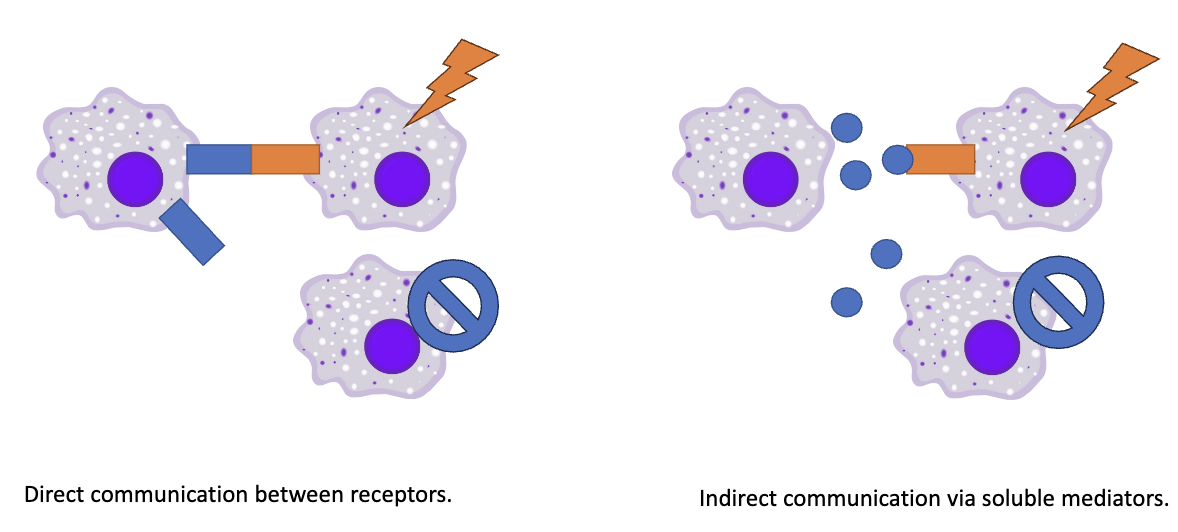
Why is the concept of “cognate pairs” important?
Critical for antigen-specific responses in adaptive immunity
Ensures that only the right cells respond to the right signals
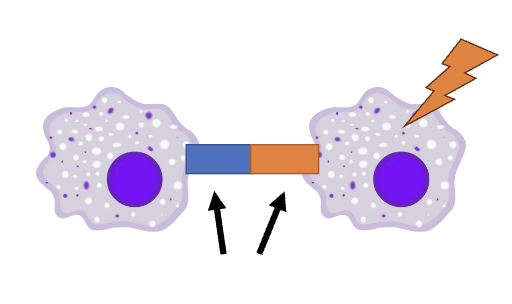
How do receptor:ligand interactions change gene expression?
Receptor binds ligand → interaction begins
Triggers secondary messengers inside the cell
Secondary messengers activate transcription factors
Transcription factors enter nucleus
Cell transcribes & translates new products
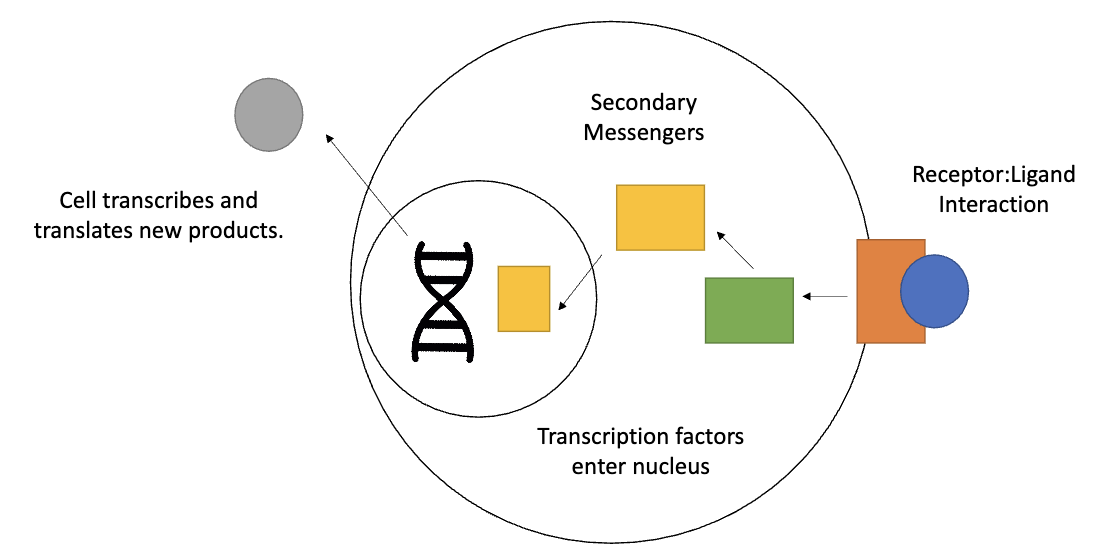
Real example: How do cells respond to viral infection?
Virus infects cell
Viral DNA detected by immune receptors inside cell
Secondary messengers move to nucleus → change transcription
Infected cell expresses interferons
Interferons signal to nearby cells = paracrine signalling
Effect: “Stop transcribing” → limits viral replication
Stop virus from propagating by using host cell machinery
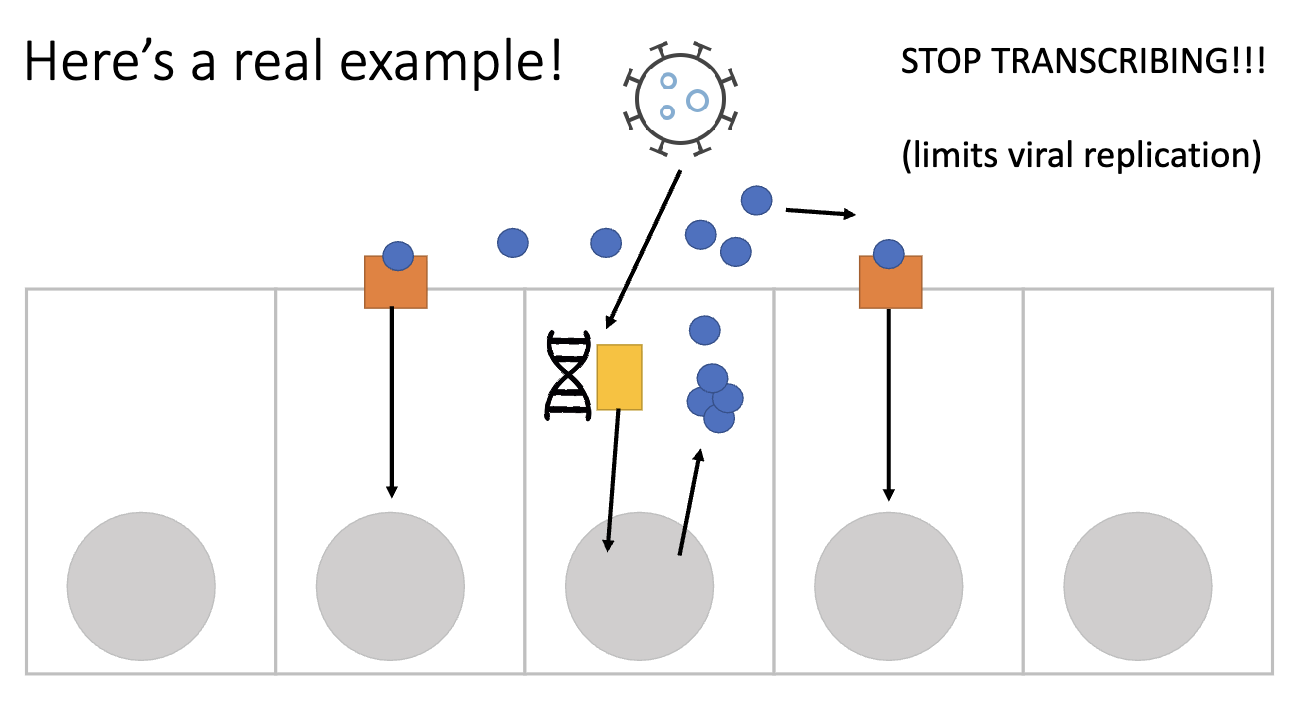
What are some major receptor functions & types?
Detect pathogens → Pattern recognition receptors
Receive soluble signals → Cytokine receptors
Move/migrate → Chemokine receptors
Stick to other cells/environment → Adhesion receptors
Respond to cell-surface signals → Co-stimulatory receptors
Sense mechanical force → Stretch receptors
Bind antibodies → Fc receptors
*Table will not be on test
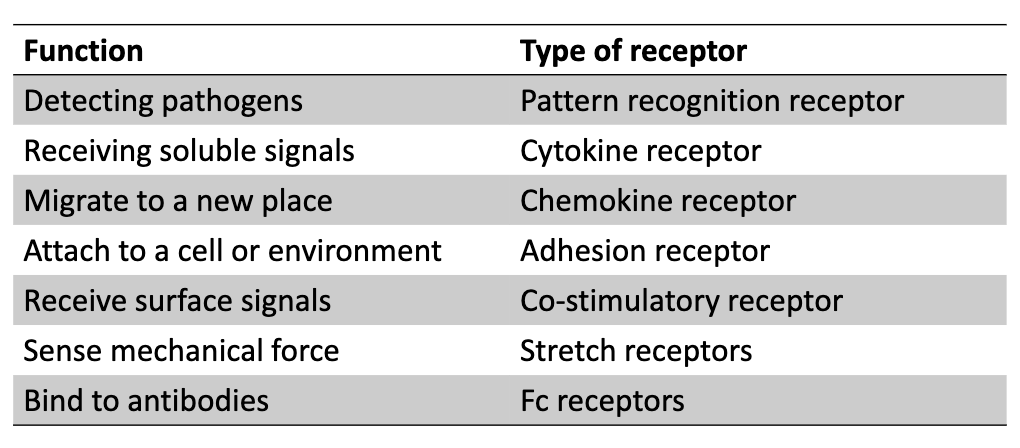
How did immunologists simplify receptor naming?
Before: many competing names (e.g., “B cell stimulating factor 2” vs. “hepatocyte growth factor”)
1982 Paris → created CD system
Clusters of Differentiation (CDs) = standardized names
Example: CD1, CD2, CD3, CD4 …
Today: Over 370 CD molecules identified
What does “CD” stand for in immunology?
Cluster of Differentiation
Also called “Classification Determinant”
Standardized system for naming receptors/proteins on cells
What are cytokines?
Secreted signaling molecules
Greek: “cyto” = cell, “kine” = movement
Definition: Molecules that signal and cause cells to move or change
How did immunologists standardize cytokine naming?
Before: many competing names (e.g., “B cell stimulating factor 2” vs. “human growth factor”)
1979 Switzerland → created Interleukin system (IL)
“Inter” = between, “leukin” = leukocytes (immune cells)
Means: molecules that signal between immune cells
Numbered system: IL-1, IL-2, IL-3, IL-4 … (~50 total)
Do interleukins signal only between immune cells?
Originally defined as signals between leukocytes
But actually → they also signal with non-immune cells